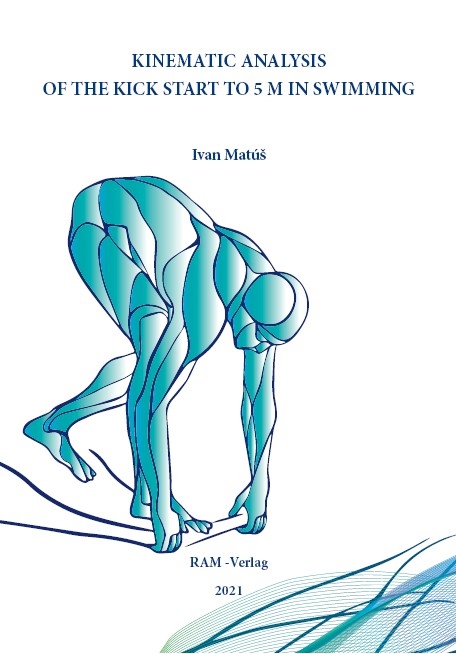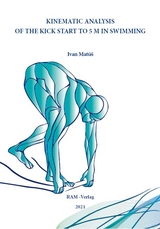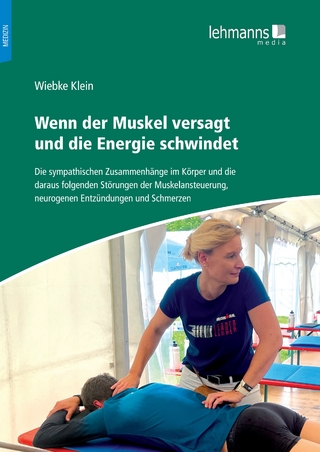Kinematic Analysis of the Kick Start to 5 M in Simming
Seiten
PREFACE
The winner of the swimming sprint disciplines is often decided by hundreds of seconds, so all the factors that limit the swimming performance in a given swimming discipline must be perfectly mastered. Swimmers must perform starts in the shortest time possible, swim over a specific course, execute turns and finish the race (the end of the race is completed by touching the touchpad). Start dive is an integral part of every swimming race. Several studies (Cossor & Mason, 2001; Lyttle & Benjanuvatra, 2005; Okuno et al., 2002; Tor, Pease, & Ball, 2014) have shown that start is defined as the time between the signal and the moment when the swimmer reaches the 15-m distance. However, 5 m, 7.5 m, 9 m, 10 m or 12 m were also used as the locations to set the finish of the start phase. Likewise, the swimmer’s head, hip, toe or hands were used as the reference segments (Arellano, Moreno, Martínez, & Oña, 1996; Biel, Fischer, & Kibele, 2010; Lee, Huang, & Lee, 2012; Takeda, Takagi, & Tsubakimoto, 2012; Welcher, Richard, Hinrichs, & George, 2008). There is a relationship between the length of the race and factor loading. In sprint races (50 or 100 m), the race time depends on the start at a rate of 24% (50 m) and 11% (100 m) (Argüelles-Cienfuegos & De La Fuente-Caynzos, 2014). The shorter the race, the more important is the start.
The technique of starts in swimming has developed over the years, with two basic types of start – grab start and track start, which differ in the leg position on the starting block. With the grab start, the swimmers place their feet on the front part of the block. With the track start, the swimmer places one of his legs in the front and the other in the rear part of the starting block. This position leads to a more effective upper- and lower-body recruitment during the block phase (Benjanuvatra, Lyttle, Blanksby, & Larkin, 2004; Breed & McElroy, 2000). The grab start appeared in the late 1960s, and the track start appeared in 1973. Both techniques (grab start and track start) coexisted for more than 40s due to disagreements over their advantages. The results of a various of studies (Benjanuvatra, et al., 2004; Blanksby, Nicholson, & Elliott, 2002; Juergens et al., 1999; Shin & Groppel, 1986; Welcher, Hinrichs, & George, 2008) have not shown which of the start technique specified above is more effective. Despite inconsistent findings the track start is more popular with performance and world-class swimmers, which may be attributed to improved stability on the starting block, which reduces the risk of false start and subsequent disqualification (Breed & McElroy, 2000; Vantorre, Seifert, Fernandes, Vilas-Boas & Chollet, 2010a). The start is one of the commonly used block start techniques in competitive swimming (Tanaka et al., 2020), consisting of the block phase, flight phase, water phase, and swim phase (Blanco, Blanca, & Arellano, 2017). Out of all phases, swimmers produce the highest velocity in the block phase. In this phase, the average horizontal takeoff velocity is significantly correlated with times to 5 and 15 m (Garcia-Ramos et al., 2015).
Before 2009, swimmers started from traditional starting blocks equipped with handles on both sides. Since 2009, swimmers in Slovakia and worldwide have been using a new starting block (manufactured by Omega) at world-class swim events. The latest block has a rear footrest that is adjustable in the front and rear directions (5 positions in the range of 200 mm) at an angle of 30° (90° rear knee angle) (Swiss Timing, 2014). This technical innovation resulted in the modification of the basic position during the track start. When using the new OSB starting block, swimmers place the rear foot against the so-called kick plate, which resulted in the name of the new start technique – kick start. This fact supposed the decline in grab start and track start popularity in last years’ competition. The dramatic changes in the start techniques in the past years make it necessary to review the current knowledge about this phase of the swimming race.
Author
PREFACE
The winner of the swimming sprint disciplines is often decided by hundreds of seconds, so all the factors that limit the swimming performance in a given swimming discipline must be perfectly mastered. Swimmers must perform starts in the shortest time possible, swim over a specific course, execute turns and finish the race (the end of the race is completed by touching the touchpad). Start dive is an integral part of every swimming race. Several studies (Cossor & Mason, 2001; Lyttle & Benjanuvatra, 2005; Okuno et al., 2002; Tor, Pease, & Ball, 2014) have shown that start is defined as the time between the signal and the moment when the swimmer reaches the 15-m distance. However, 5 m, 7.5 m, 9 m, 10 m or 12 m were also used as the locations to set the finish of the start phase. Likewise, the swimmer’s head, hip, toe or hands were used as the reference segments (Arellano, Moreno, Martínez, & Oña, 1996; Biel, Fischer, & Kibele, 2010; Lee, Huang, & Lee, 2012; Takeda, Takagi, & Tsubakimoto, 2012; Welcher, Richard, Hinrichs, & George, 2008). There is a relationship between the length of the race and factor loading. In sprint races (50 or 100 m), the race time depends on the start at a rate of 24% (50 m) and 11% (100 m) (Argüelles-Cienfuegos & De La Fuente-Caynzos, 2014). The shorter the race, the more important is the start.
The technique of starts in swimming has developed over the years, with two basic types of start – grab start and track start, which differ in the leg position on the starting block. With the grab start, the swimmers place their feet on the front part of the block. With the track start, the swimmer places one of his legs in the front and the other in the rear part of the starting block. This position leads to a more effective upper- and lower-body recruitment during the block phase (Benjanuvatra, Lyttle, Blanksby, & Larkin, 2004; Breed & McElroy, 2000). The grab start appeared in the late 1960s, and the track start appeared in 1973. Both techniques (grab start and track start) coexisted for more than 40s due to disagreements over their advantages. The results of a various of studies (Benjanuvatra, et al., 2004; Blanksby, Nicholson, & Elliott, 2002; Juergens et al., 1999; Shin & Groppel, 1986; Welcher, Hinrichs, & George, 2008) have not shown which of the start technique specified above is more effective. Despite inconsistent findings the track start is more popular with performance and world-class swimmers, which may be attributed to improved stability on the starting block, which reduces the risk of false start and subsequent disqualification (Breed & McElroy, 2000; Vantorre, Seifert, Fernandes, Vilas-Boas & Chollet, 2010a). The start is one of the commonly used block start techniques in competitive swimming (Tanaka et al., 2020), consisting of the block phase, flight phase, water phase, and swim phase (Blanco, Blanca, & Arellano, 2017). Out of all phases, swimmers produce the highest velocity in the block phase. In this phase, the average horizontal takeoff velocity is significantly correlated with times to 5 and 15 m (Garcia-Ramos et al., 2015).
Before 2009, swimmers started from traditional starting blocks equipped with handles on both sides. Since 2009, swimmers in Slovakia and worldwide have been using a new starting block (manufactured by Omega) at world-class swim events. The latest block has a rear footrest that is adjustable in the front and rear directions (5 positions in the range of 200 mm) at an angle of 30° (90° rear knee angle) (Swiss Timing, 2014). This technical innovation resulted in the modification of the basic position during the track start. When using the new OSB starting block, swimmers place the rear foot against the so-called kick plate, which resulted in the name of the new start technique – kick start. This fact supposed the decline in grab start and track start popularity in last years’ competition. The dramatic changes in the start techniques in the past years make it necessary to review the current knowledge about this phase of the swimming race.
Author
The winner of the swimming sprint disciplines is often decided by hundreds of seconds, so all the factors that limit the swimming performance in a given swimming discipline must be perfectly mastered. Swimmers must perform starts in the shortest time possible, swim over a specific course, execute turns and finish the race (the end of the race is completed by touching the touchpad). Start dive is an integral part of every swimming race. Several studies (Cossor & Mason, 2001; Lyttle & Benjanuvatra, 2005; Okuno et al., 2002; Tor, Pease, & Ball, 2014) have shown that start is defined as the time between the signal and the moment when the swimmer reaches the 15-m distance. However, 5 m, 7.5 m, 9 m, 10 m or 12 m were also used as the locations to set the finish of the start phase. Likewise, the swimmer’s head, hip, toe or hands were used as the reference segments (Arellano, Moreno, Martínez, & Oña, 1996; Biel, Fischer, & Kibele, 2010; Lee, Huang, & Lee, 2012; Takeda, Takagi, & Tsubakimoto, 2012; Welcher, Richard, Hinrichs, & George, 2008). There is a relationship between the length of the race and factor loading. In sprint races (50 or 100 m), the race time depends on the start at a rate of 24% (50 m) and 11% (100 m) (Argüelles-Cienfuegos & De La Fuente-Caynzos, 2014). The shorter the race, the more important is the start.
The technique of starts in swimming has developed over the years, with two basic types of start – grab start and track start, which differ in the leg position on the starting block. With the grab start, the swimmers place their feet on the front part of the block. With the track start, the swimmer places one of his legs in the front and the other in the rear part of the starting block. This position leads to a more effective upper- and lower-body recruitment during the block phase (Benjanuvatra, Lyttle, Blanksby, & Larkin, 2004; Breed & McElroy, 2000). The grab start appeared in the late 1960s, and the track start appeared in 1973. Both techniques (grab start and track start) coexisted for more than 40s due to disagreements over their advantages. The results of a various of studies (Benjanuvatra, et al., 2004; Blanksby, Nicholson, & Elliott, 2002; Juergens et al., 1999; Shin & Groppel, 1986; Welcher, Hinrichs, & George, 2008) have not shown which of the start technique specified above is more effective. Despite inconsistent findings the track start is more popular with performance and world-class swimmers, which may be attributed to improved stability on the starting block, which reduces the risk of false start and subsequent disqualification (Breed & McElroy, 2000; Vantorre, Seifert, Fernandes, Vilas-Boas & Chollet, 2010a). The start is one of the commonly used block start techniques in competitive swimming (Tanaka et al., 2020), consisting of the block phase, flight phase, water phase, and swim phase (Blanco, Blanca, & Arellano, 2017). Out of all phases, swimmers produce the highest velocity in the block phase. In this phase, the average horizontal takeoff velocity is significantly correlated with times to 5 and 15 m (Garcia-Ramos et al., 2015).
Before 2009, swimmers started from traditional starting blocks equipped with handles on both sides. Since 2009, swimmers in Slovakia and worldwide have been using a new starting block (manufactured by Omega) at world-class swim events. The latest block has a rear footrest that is adjustable in the front and rear directions (5 positions in the range of 200 mm) at an angle of 30° (90° rear knee angle) (Swiss Timing, 2014). This technical innovation resulted in the modification of the basic position during the track start. When using the new OSB starting block, swimmers place the rear foot against the so-called kick plate, which resulted in the name of the new start technique – kick start. This fact supposed the decline in grab start and track start popularity in last years’ competition. The dramatic changes in the start techniques in the past years make it necessary to review the current knowledge about this phase of the swimming race.
Author
PREFACE
The winner of the swimming sprint disciplines is often decided by hundreds of seconds, so all the factors that limit the swimming performance in a given swimming discipline must be perfectly mastered. Swimmers must perform starts in the shortest time possible, swim over a specific course, execute turns and finish the race (the end of the race is completed by touching the touchpad). Start dive is an integral part of every swimming race. Several studies (Cossor & Mason, 2001; Lyttle & Benjanuvatra, 2005; Okuno et al., 2002; Tor, Pease, & Ball, 2014) have shown that start is defined as the time between the signal and the moment when the swimmer reaches the 15-m distance. However, 5 m, 7.5 m, 9 m, 10 m or 12 m were also used as the locations to set the finish of the start phase. Likewise, the swimmer’s head, hip, toe or hands were used as the reference segments (Arellano, Moreno, Martínez, & Oña, 1996; Biel, Fischer, & Kibele, 2010; Lee, Huang, & Lee, 2012; Takeda, Takagi, & Tsubakimoto, 2012; Welcher, Richard, Hinrichs, & George, 2008). There is a relationship between the length of the race and factor loading. In sprint races (50 or 100 m), the race time depends on the start at a rate of 24% (50 m) and 11% (100 m) (Argüelles-Cienfuegos & De La Fuente-Caynzos, 2014). The shorter the race, the more important is the start.
The technique of starts in swimming has developed over the years, with two basic types of start – grab start and track start, which differ in the leg position on the starting block. With the grab start, the swimmers place their feet on the front part of the block. With the track start, the swimmer places one of his legs in the front and the other in the rear part of the starting block. This position leads to a more effective upper- and lower-body recruitment during the block phase (Benjanuvatra, Lyttle, Blanksby, & Larkin, 2004; Breed & McElroy, 2000). The grab start appeared in the late 1960s, and the track start appeared in 1973. Both techniques (grab start and track start) coexisted for more than 40s due to disagreements over their advantages. The results of a various of studies (Benjanuvatra, et al., 2004; Blanksby, Nicholson, & Elliott, 2002; Juergens et al., 1999; Shin & Groppel, 1986; Welcher, Hinrichs, & George, 2008) have not shown which of the start technique specified above is more effective. Despite inconsistent findings the track start is more popular with performance and world-class swimmers, which may be attributed to improved stability on the starting block, which reduces the risk of false start and subsequent disqualification (Breed & McElroy, 2000; Vantorre, Seifert, Fernandes, Vilas-Boas & Chollet, 2010a). The start is one of the commonly used block start techniques in competitive swimming (Tanaka et al., 2020), consisting of the block phase, flight phase, water phase, and swim phase (Blanco, Blanca, & Arellano, 2017). Out of all phases, swimmers produce the highest velocity in the block phase. In this phase, the average horizontal takeoff velocity is significantly correlated with times to 5 and 15 m (Garcia-Ramos et al., 2015).
Before 2009, swimmers started from traditional starting blocks equipped with handles on both sides. Since 2009, swimmers in Slovakia and worldwide have been using a new starting block (manufactured by Omega) at world-class swim events. The latest block has a rear footrest that is adjustable in the front and rear directions (5 positions in the range of 200 mm) at an angle of 30° (90° rear knee angle) (Swiss Timing, 2014). This technical innovation resulted in the modification of the basic position during the track start. When using the new OSB starting block, swimmers place the rear foot against the so-called kick plate, which resulted in the name of the new start technique – kick start. This fact supposed the decline in grab start and track start popularity in last years’ competition. The dramatic changes in the start techniques in the past years make it necessary to review the current knowledge about this phase of the swimming race.
Author
| Erscheinungsdatum | 30.11.2021 |
|---|---|
| Verlagsort | Lüdenscheid |
| Sprache | englisch |
| Maße | 174 x 245 mm |
| Gewicht | 250 g |
| Themenwelt | Medizin / Pharmazie ► Medizinische Fachgebiete ► Sportmedizin |
| Schlagworte | kick start • kinematic analysis • to 5 M in Simming |
| ISBN-10 | 3-96595-009-6 / 3965950096 |
| ISBN-13 | 978-3-96595-009-2 / 9783965950092 |
| Zustand | Neuware |
| Haben Sie eine Frage zum Produkt? |
Mehr entdecken
aus dem Bereich
aus dem Bereich
Die sympathischen Zusammenhänge im Körper und die daraus folgenden …
Buch | Softcover (2024)
Lehmanns Media (Verlag)
CHF 41,90
1100 kommentierte Prüfungsfragen
Buch (2023)
Thieme (Verlag)
CHF 125,95
Leistungsphysiologische Trainingslehre unter besonderer …
Buch | Hardcover (2019)
Spitta GmbH (Verlag)
CHF 91,80




